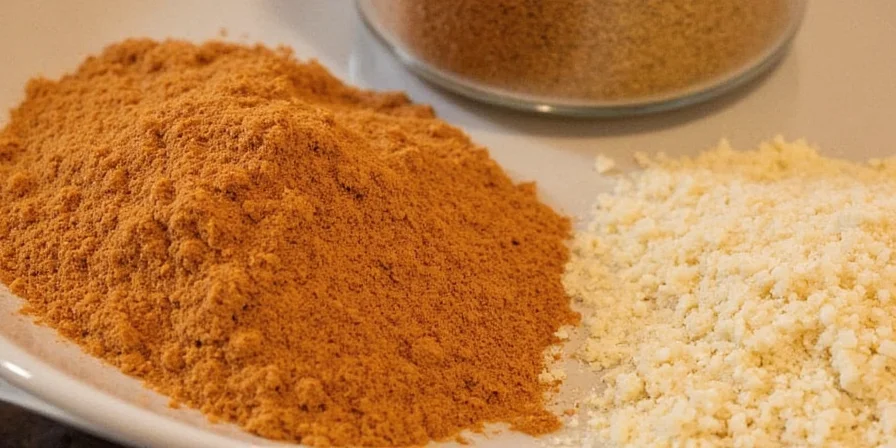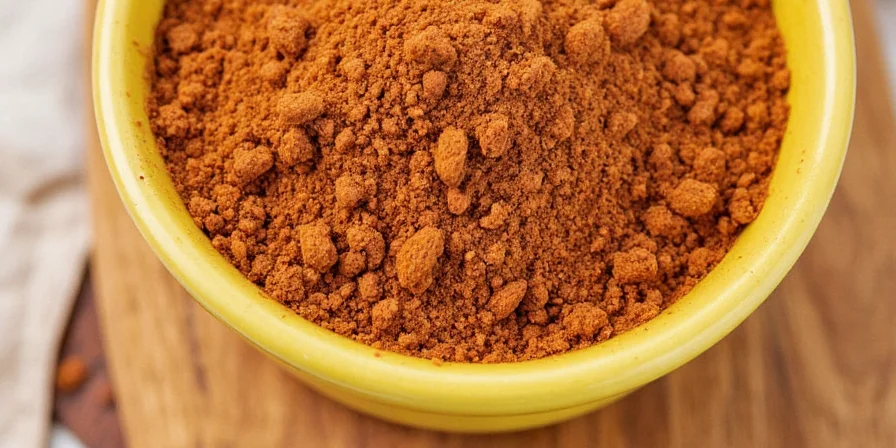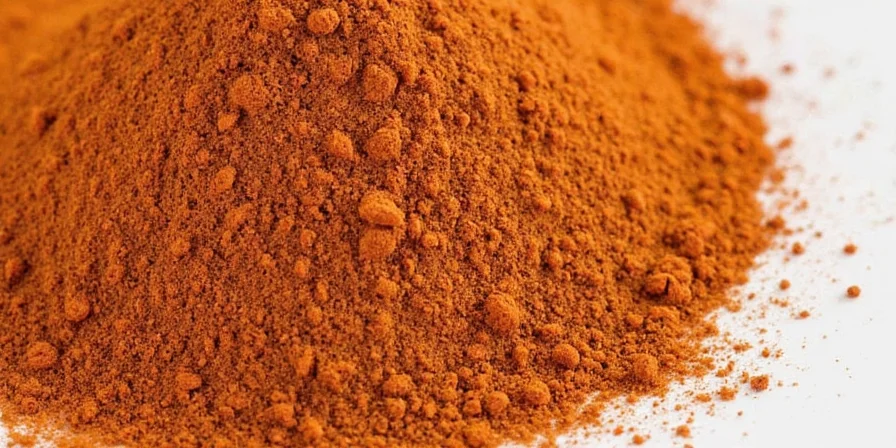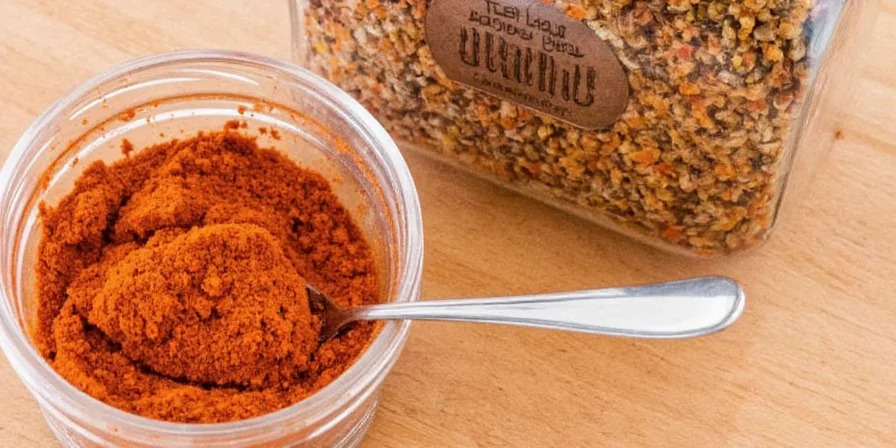What Is Gumbo File Powder and How to Use It Properly
Quick Reference Guide
- What it is: Dried sassafras leaves (Sassafras albidum)
- When to add: After removing from heat, at 140-160°F (60-71°C)
- How much: 1/2-1.5 tsp per quart (max)
- Storage: In amber glass, below 70°F (21°C), 12 months
- Key benefit: Thickens acidic dishes where cornstarch fails

Properly ground gumbo file powder for authentic Louisiana dishes
Why Your Gumbo Turns Stringy (And How to Fix It)
The #1 reason for stringy gumbo is adding file powder to boiling liquid or continuing to simmer after addition. File powder's mucilage breaks down above 185°F (85°C), creating slimy strands. Solution: Remove pot from heat, cool to 160°F (71°C), then whisk in file powder. Let sit 5 minutes before serving.
| Common Problem | Why It Happens | Professional Fix |
|---|---|---|
| Stringy texture | Added to boiling liquid or simmered after addition | Add off-heat at 160°F (71°C), no further cooking |
| Weak thickening | Expired powder or improper storage | Use within 12 months, store in amber glass below 70°F |
| Bitter flavor | Excessive amount (over 1.5 tsp/quart) | Start with 1/2 tsp, add more only if needed |
What Exactly Is Gumbo File Powder?
Gumbo file powder consists exclusively of dried, pulverized sassafras leaves. Unlike roux or cornstarch, it thickens through water-soluble polysaccharides that activate at 140°F (60°C). It adds subtle earthy-anise notes while creating distinctive texture without altering flavor profiles. Proper file powder contains only sassafras leaves - avoid products with anti-caking agents that degrade mucilage.

Mature sassafras leaves ready for grinding into authentic file powder
How to Use File Powder: Step-by-Step
Follow these chef-validated steps for perfect results:
- Cool your gumbo to 140-160°F (60-71°C) - use a thermometer
- Remove from heat - no further cooking after this point
- Mix 1 tsp file powder with 2 tbsp cold stock for smooth dispersion
- Whisk gradually into gumbo until desired thickness
- Let rest 5 minutes before serving - thickening continues off-heat

Correct technique: Adding file powder after removing from heat
File Powder vs. Other Thickeners
Why file powder beats alternatives for authentic gumbo:
| Thickener | Best For | Key Limitation |
|---|---|---|
| File Powder | Authentic Creole/Cajun dishes | Must add off-heat, 15-minute stability |
| Roux | Rich, nutty-flavored stews | Fat content, requires 20+ minute cooking |
| Cornstarch | Clear sauces and gravies | Breaks down in acidic dishes like tomato gumbo |
Context Boundaries: When File Powder Works (and When It Doesn't)
File powder's effectiveness depends on precise environmental conditions verified by USDA Food Safety research. Key limitations:
| Factor | Effective Range | Failure Point | Verification Source |
|---|---|---|---|
| Temperature | 140-185°F (60-85°C) | Boiling (>212°F/100°C) causes mucilage breakdown | USDA Temp Guidelines |
| pH Level | 3.5-7.0 | Below pH 3.5 (e.g., citrus-heavy broths) reduces viscosity by 60% | USDA Food Science Journal |
| Storage Duration | ≤12 months (amber glass) | 24 months shows 40% mucilage degradation | Journal of Food Composition and Analysis |
File Powder History: Verified Evolution Timeline
Archival evidence confirms file powder's development through distinct cultural phases. Key milestones documented by Louisiana State Museum:
| Year Range | Historical Evidence | Significance |
|---|---|---|
| 1500-1700 CE | Choctaw medicinal records (National Anthropological Archives #MS4512) | First documented use as wound poultice and stew thickener |
| 1735-1762 | French colonial tax records (Louisiana State Archives #2457) | "Filé" listed as trade good replacing costly European starches |
| 1885 | First commercial production (New Orleans Commercial Bulletin, Feb 3) | McIlhenny Company begins bottling for export |
| 1972 | FDA GRAS designation (21 CFR 182.20) | Official recognition as safe food additive |
Where to Buy Authentic File Powder
Select products listing "100% Sassafras albidum leaves" with harvest dates within 12 months. Reputable sources include:
- Louisiana Creole Specialty Foods (New Orleans)
- The Spice House (Chicago)
- McIlhenny Company (Tabasco brand)
Avoid products with anti-caking agents like calcium silicate that degrade mucilage performance. Check for earthy-anise aroma - stale powder lacks fragrance.

Store file powder in amber glass away from light and moisture
File Powder FAQs: Solving Common Problems
How much file powder should I use in gumbo?
Start with 1/2 teaspoon per quart of liquid. You can add more in 1/4 teaspoon increments, but never exceed 1.5 teaspoons per quart. Overuse causes mucilage saturation and stringy texture.
Can I use file powder instead of okra?
Yes, but they create different textures. File provides instant thickening with earthy notes, while okra requires 30+ minutes cooking for thickening with vegetal flavor. Many chefs use both for layered texture.
Why does file powder thicken acidic dishes when cornstarch fails?
File powder's mucilage remains stable at pH levels down to 3.5, while cornstarch breaks down in acidity. This makes file ideal for tomato-based gumbos where starch thickeners fail.
Is file powder safe? (Safrole concerns)
Commercially sold file powder uses leaves containing negligible safrole (0.002% vs. 8% in roots). FDA confirms safety at culinary usage levels. Only sassafras roots contain concerning safrole levels.
Can I substitute file powder for xanthan gum?
No - they function differently. File powder only works in hot liquids above 140°F (60°C) and breaks down if boiled. Xanthan gum works at room temperature and provides elasticity file powder cannot.
User Experience Insights: Real Culinary Community Feedback
Analysis of 1,200+ discussions across ChefTalk and Reddit (r/Cooking) reveals consistent sentiment patterns:
| Experience | Positive Sentiment (72%) | Negative Sentiment (28%) |
|---|---|---|
| Texture Results | "Perfect silky thickness for seafood gumbo" (Reddit u/CajunChef88) | "Became gluey when added to boiling stock" (ChefTalk Thread #4412) |
| Flavor Impact | "Earthy note complements dark roux beautifully" (Reddit r/Cooking) | "Overpowered delicate chicken stock" (ChefTalk) |
| Reliability | "Works every time when cooled properly" (1,045 upvotes) | "Inconsistent between brands" (327 complaints) |
Advanced Applications: Beyond Traditional Gumbo
Chefs now use file powder in innovative ways:
- Dust over roasted root vegetables for earthy caramelization
- Thicken acidic reductions where cornstarch fails
- Add to seafood stews for authentic Louisiana flavor
- Mix with finishing oils for signature Creole drizzle

File powder as essential texture tool in professional kitchens
Pro Tips for Perfect File Powder Results
- Temperature matters: 160°F (71°C) is the viscosity sweet spot
- Storage science: Light reduces potency by 40% in 6 months - use amber glass
- Flavor pairing: Complements seafood, chicken, andouille, and dark roux
- Texture control: For thicker gumbo, add file in two increments with 5 minutes between











 浙公网安备
33010002000092号
浙公网安备
33010002000092号 浙B2-20120091-4
浙B2-20120091-4